New Guinean balsam, home care that does not require special skills, is a tropical plant that saw life as a result of crossing Hawker balsam with beautiful flowering balsams. The flower, having a compact size, will decorate any room, not excluding rooms with limited space.
Material Content:
Balsam New Guinea: features of growing
New Guinean balsams, cultivated as potted crops, are perennial herbaceous plants; for open ground they are also used, but as annual representatives.
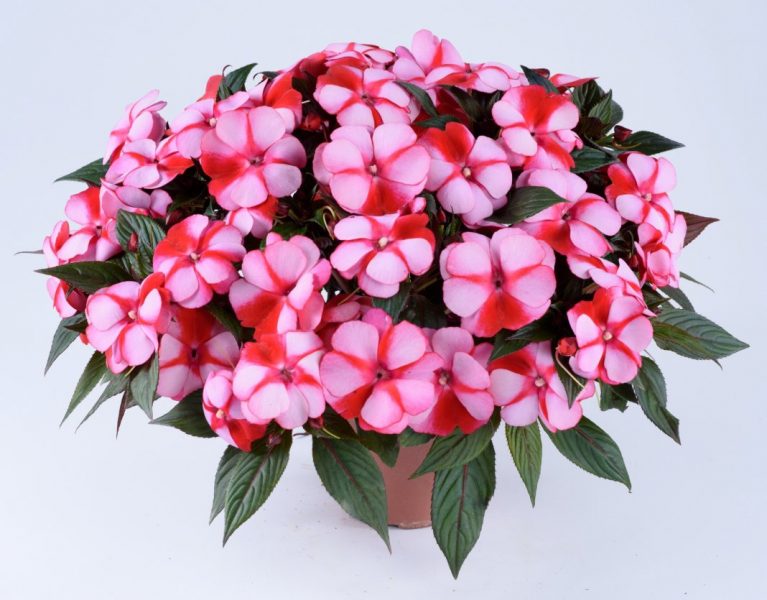
Cultivating a culture distinguished by a thick fleshy stalk, powerful leafy plates and flowers that are able to please their flowering for 8 months a year, the following features of the representative of the tropics should be taken into account:
- the flower discards leaves as a result of a lack of lighting, hypothermia or drying out of the soil;
- the abundance of flowering is directly dependent on the regularity and composition of top dressing, as well as the correct selection of the pot.
Home Care
Miniature varieties and hybrids with a variety of colors, obtained by breeders as a result of painstaking and long work, are great for growing in an apartment environment. However, in order to see abundant flowering over a long period, it is necessary to ensure proper care for balsam.
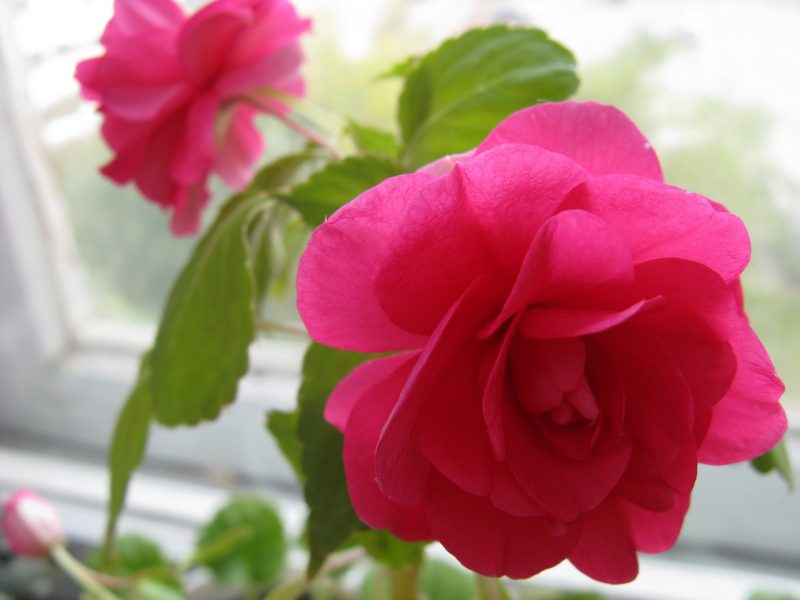
Soil requirements
Balsam feels good on fertile light soils, therefore, for growing, a substrate is purchased for decorative flowers in specialized stores or prepared independently from sheet soil, turf, peat and sand in equal quantities.
Important! When using a self-prepared soil mixture, it must be decontaminated before filling the pot.
Read also:balsam: home care
Location and Lighting
The representative of the tropical flora prefers soft diffused light, therefore it is placed on the eastern or western windows, where there is no access to direct sunlight. In winter, when reducing daylight hours, it is recommended to organize additional artificial lighting to avoid loss of decorativeness due to elongation and exposure of shoots.
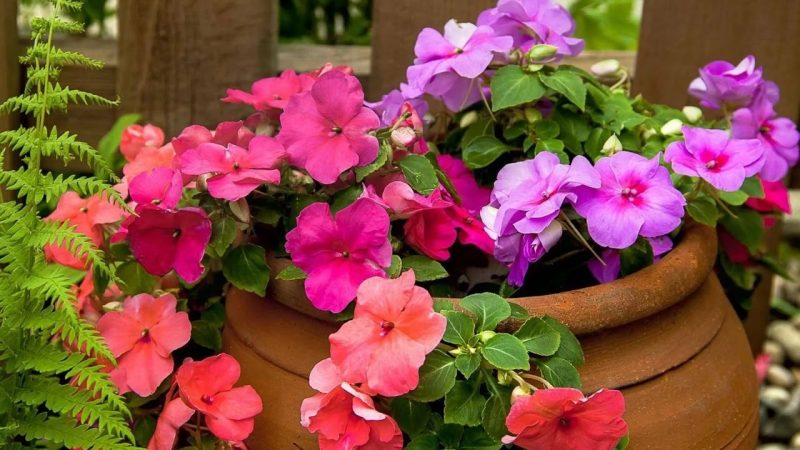
Temperature
Room conditions allow to provide the flower with an optimal temperature regime of 18-24 ° C. The plant negatively refers to temperature changes, and a decrease in temperature below 10 ° C can cause its death. Since drafts and frosty air are detrimental to balsam, it is not recommended to place it on the windowsills of kitchen windows, which often come off for ventilation.
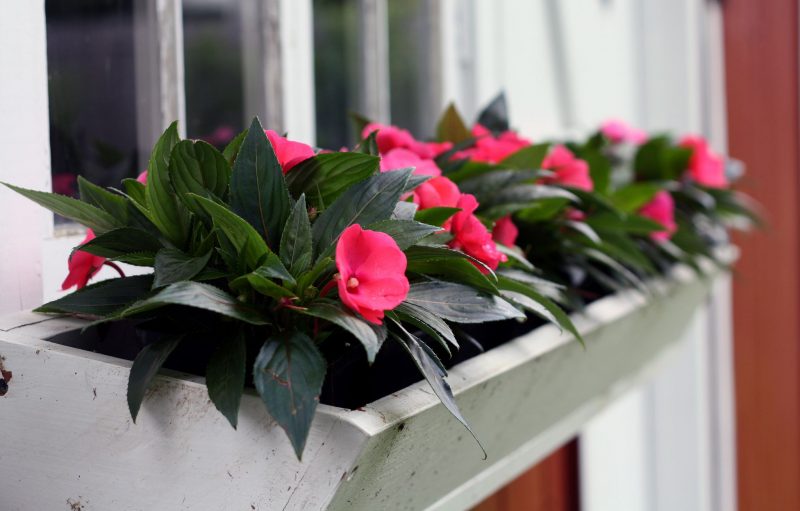
Watering a flower
Balsamine needs systematic and plentiful moisturizing, in the intervals between which the soil will dry out slightly. This will prevent the development of root rot and drying of the substrate. In winter, the frequency of irrigation is reduced to 2 times per month, and the remaining water from the pan necessarily pour out.
Air humidity
The natural habitat of balsam is a tropical climate with high humidity. Therefore, dryness can trigger the discharge of buds and flowers. To ensure the optimum level of humidity, systematic spraying is carried out, which the flower needs especially urgently with the advent of summer heat and the winter heating season.

Also, the plant responds well to rubbing the leaves with a damp sponge, which provides the flower with free breathing, freeing it from a layer of dust.
Attention! When spraying, drops are not allowed on flowers and buds.
Fertilizer and fertilizer
To obtain abundant flowering, it is necessary to provide the plant with additional nutrition twice a month.
For top dressing, liquid complex mineral fertilizers are used with a significant proportion of potassium, which is responsible for stimulating the formation of flowers. The plant is not fed with pure nitrogen to avoid the active growth of green mass to the detriment of flowering.
Pruning and pinching
After the flower reaches the required height, the shoots are nipped, which stimulates branching. Sanitary pruning, in which diseased and damaged branches are removed, is carried out regularly. In the spring, if the plant has grown too much, it is recommended to remove all excess shoots, and shorten the remaining ones by half.
Important! With compact bushes, such manipulations are carried out only for sanitary purposes.
How to transplant?
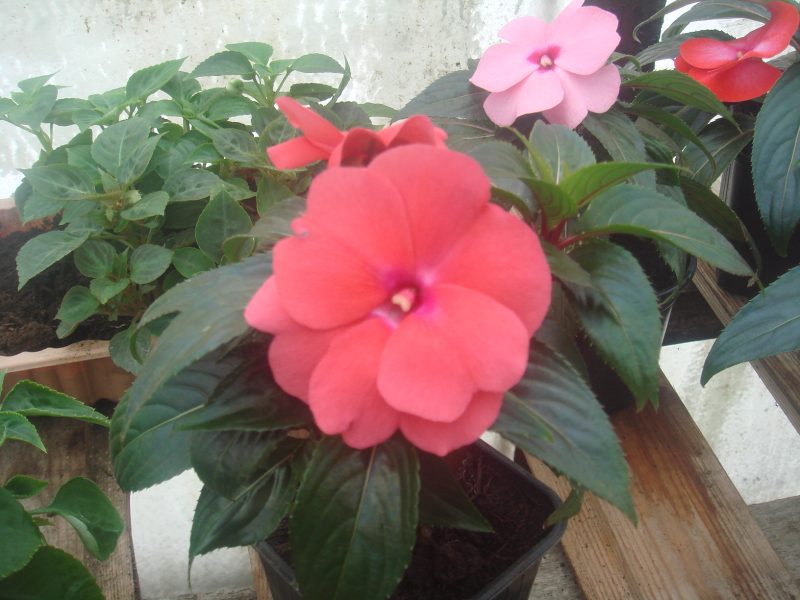
Balsam transplantation is carried out once every two to three years with the advent of spring. Wherein:
- a small pot in diameter and depth is selected - cramped conditions stimulate lush flowering;
- expanded clay drainage is placed at the bottom;
- after transshipment of the flower, the voids are filled with nutrient mix so that the root neck rises 2 cm above the ground.
Pest and Disease Control
In New Guinea balsam, pests such as aphids, spider mites and whiteflies can be observed due to violation of the rules for care. For prevention purposes, a plant during a period when there are no flowers, a warm shower is organized. If settlement has occurred, the most effective control method is to treat the culture with an insecticide according to the manufacturer's instructions.
Of the diseases, the most common is rot, caused by excessive watering and stagnation of water. When the stem rots, the plant rhizome is inspected, the affected areas are removed, after which the plant is transplanted into a new disinfected substrate and treated with a fungicide.
Propagation of New Guinea Balsam
Culture propagates in vegetative and generative ways.
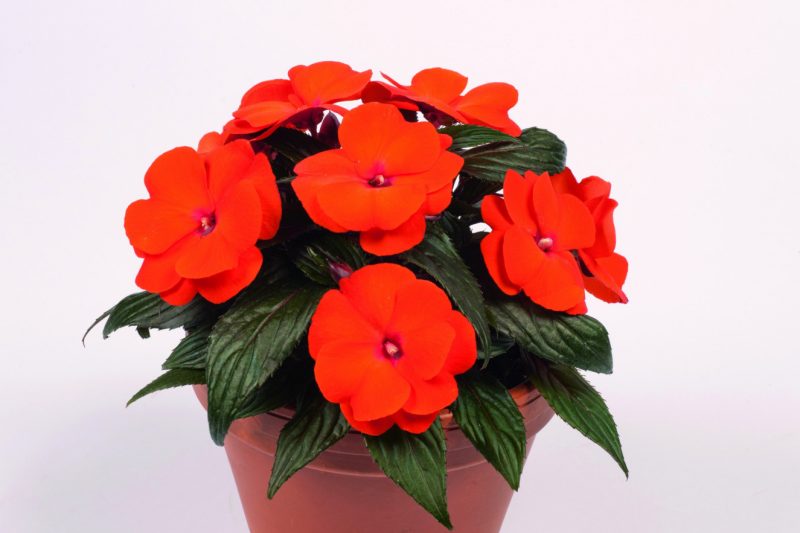
Seed way
When carrying out the procedure in February:
- a container is prepared - it is washed and disinfected, after which it is filled with a nutritious substrate from peat, sand and sheet soil;
- seeds are distributed on the surface of the soil and sprinkled with a small layer;
- the container is covered with a film (or glass), which is systematically removed for ventilation and humidification;
- two weeks later, shoots will appear, which, after getting stronger, must be dived into separate pots;
- after 4 months, the young plant will give the first flowers.
Cuttings
The most popular method that allows you to save all varietal qualities of the plant.
When grafting, these rules should be followed.
- In spring or summer, cuttings are prepared from apical shoots and placed for rooting in water or a substrate with a depth of 1-1.5 cm.
- The container with cuttings moves to the penumbra, protected from wind and drafts.
- After 2 weeks, when the roots are formed, new specimens are planted in separate pots.
- After 2 months, the flower grower will be able to admire the first flowering of a new flower.
Thus, the correct implementation of basic care measures that are not labor intensive and will allow you to grow a healthy plant at home that will decorate your home with its luxurious flowers for a long time.












